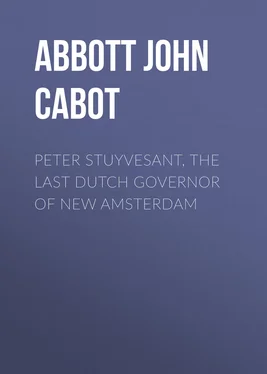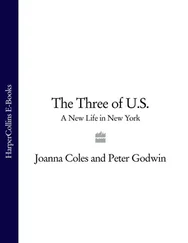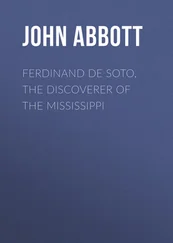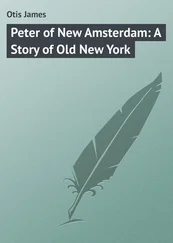John Abbott - Peter Stuyvesant, the Last Dutch Governor of New Amsterdam
Здесь есть возможность читать онлайн «John Abbott - Peter Stuyvesant, the Last Dutch Governor of New Amsterdam» — ознакомительный отрывок электронной книги совершенно бесплатно, а после прочтения отрывка купить полную версию. В некоторых случаях можно слушать аудио, скачать через торрент в формате fb2 и присутствует краткое содержание. Жанр: foreign_prose, История, foreign_edu, foreign_antique, на английском языке. Описание произведения, (предисловие) а так же отзывы посетителей доступны на портале библиотеки ЛибКат.
- Название:Peter Stuyvesant, the Last Dutch Governor of New Amsterdam
- Автор:
- Жанр:
- Год:неизвестен
- ISBN:нет данных
- Рейтинг книги:3 / 5. Голосов: 1
-
Избранное:Добавить в избранное
- Отзывы:
-
Ваша оценка:
- 60
- 1
- 2
- 3
- 4
- 5
Peter Stuyvesant, the Last Dutch Governor of New Amsterdam: краткое содержание, описание и аннотация
Предлагаем к чтению аннотацию, описание, краткое содержание или предисловие (зависит от того, что написал сам автор книги «Peter Stuyvesant, the Last Dutch Governor of New Amsterdam»). Если вы не нашли необходимую информацию о книге — напишите в комментариях, мы постараемся отыскать её.
Peter Stuyvesant, the Last Dutch Governor of New Amsterdam — читать онлайн ознакомительный отрывок
Ниже представлен текст книги, разбитый по страницам. Система сохранения места последней прочитанной страницы, позволяет с удобством читать онлайн бесплатно книгу «Peter Stuyvesant, the Last Dutch Governor of New Amsterdam», без необходимости каждый раз заново искать на чём Вы остановились. Поставьте закладку, и сможете в любой момент перейти на страницу, на которой закончили чтение.
Интервал:
Закладка:
About this time Van Twiller issued a grant of sixty-two acres of land, a little northwest of fort Amsterdam, to Roelof Jansen. This was the original conveyance of the now almost priceless estate, held by the corporation of Trinity Church. The directors, in Holland, encouraged emigration by all the means in their power. Free passage was offered to farmers and their families. They were also promised the lease of a farm, fit for the plough, for six years, with a dwelling house, a barn, four horses and four cows. They were to pay a rent for these six years, of forty dollars a year, and eighty pounds of butter.
At the expiration of the six years the tenants were to restore the number of cattle they had received, retaining the increase. They were also assisted with clothing, provisions, etc., on credit, at an advance of fifty per cent. But notwithstanding the rapid increase of the Dutch settlements, thus secured, the English settlements were increasing with still greater rapidity. Not satisfied with their encroachments on the Connecticut, the English looked wistfully upon the fertile lands extending between that stream and the Hudson.
The region about New Haven, which, from the East and West rocks, was called the Red Rocks, attracted especial attention. Some men from Boston, who had visited it, greatly extolled the beauty and fertility of the region, declaring it to be far superior to Massachusetts Bay. "The Dutch will seize it," they wrote, "if we do not. And it is too good for any but friends."
Just then an English non-conformist clergyman, John Davenport, and two merchants from London, men of property and high religious worth, arrived at Boston. They sailed to the Red Rocks, purchased a large territory of the Indians, and regardless of the Dutch title, under the shadow of a great oak, laid the foundations of New Haven. The colony was very prosperous, and, in one year's time, numbered over one hundred souls.
And now the English made vigorous efforts to gain all the lands as far west as the Hudson river. A village of fifty log huts soon rose at Stratford, near the Housatonic. Enterprising emigrants also pushed forward as far as Norwalk, Stamford and Greenwich. The colony at Saybrook consisted in 1640, of a hundred houses, and a fine church. The Dutch now held, in the Connecticut valley, only the flat lands around fort Hope. And even these the English began to plough up. They cudgelled those of the Dutch garrison who opposed them, saying, "It would be a sin to leave uncultivated so valuable a land which can produce such excellent corn."
The English now laid claim to the whole of Long Island, and commenced a settlement at its eastern extremity. In the meantime very bitter complaints were sent to Holland respecting the incapacity of the Director Van Twiller. It was said that he, neglecting the affairs of the colony, was directing all his energies to enriching himself. He had become, it was reported, the richest landholder in the province. Though sustained by very powerful friends, he was removed.
William Kieft was appointed in his stead, the fifth Director. He was a man of very unenviable reputation, and his administration was far from successful. Mr. Brodhead gives the following true and very interesting account of the abundant natural resources of the Dutch settlements on the Hudson at this time:
"The colonists lived amid nature's richest profusion. In the forests, by the water side, and on the islands, grew a rank abundance of nuts and plums. The hills were covered with thickets of blackberries. On the flat lands, near the rivers, wild strawberries came up so plentifully that the people went there to lie down and eat them. Vines, covered with grapes as good and sweet as in Holland, clambered over the loftiest trees. Deer abounded in the forests, in harvest time and autumn, as fat as any Holland deer can be. Enormous wild turkeys and myriads of partridges, pheasants and pigeons roosted in the neighboring woods. Sometimes the turkeys and deer came down to the houses of the colonists to feed. A stag was frequently sold by the Indians for a loaf of bread, or a knife, or even for a tobacco pipe. The river produced the finest fish. There was a great plenty of sturgeon, which, at that time, the Christians did not make use of, but the Indians ate them greedily. Flax and hemp grew spontaneously. Peltries and hides were brought in great quantities, by the savages, and sold for trifles. The land was very well provisioned with all the necessaries of life." 6 6 History of the State of New York, p. 203.
Thus far, as a general rule, friendly relations had existed between the Dutch and the Indians. But all sorts of characters were now emigrating from the old world. The Indians were often defrauded, or treated harshly. Individuals among the natives retaliated by stealing. When caught they were severely punished. Notwithstanding the government prohibited the sale of muskets to the Indians, so eager were the savages to gain these weapons, so invaluable to them on their hunting-fields, that they would offer almost any price for them. Thus the Mohawks ere long obtained "guns, powder and bullets for four hundred warriors."
Kieft endeavored to tax the Indians, extorting payment in corn and furs. This exasperated them. Their reply, through one of their chiefs, would have done honor to any deliberative assembly. Indignantly the chief exclaimed:
"How can the sachem at the fort dare to exact a tax from us! He must be a very shabby fellow. He has come to live in our land when we have not invited him; and now he attempts to deprive us of our corn for nothing. The soldiers at fort Amsterdam are no protection to us. Why should we be called upon to support them? We have allowed the Dutch to live peaceably in our country, and have never demanded of them any recompense. When they lost a ship here, and built a new one, we supplied them with food and all other necessaries. We took care of them for two winters until their ship was finished. The Dutch are under obligations to us. We have paid full price for everything we have purchased of them. There is, therefore, no reason why we should supply them with corn and furs for nothing. If we have ceded to them the country they are living in, we yet remain masters of what we have retained for ourselves."
Конец ознакомительного фрагмента.
Текст предоставлен ООО «ЛитРес».
Прочитайте эту книгу целиком, на ЛитРес.
Безопасно оплатить книгу можно банковской картой Visa, MasterCard, Maestro, со счета мобильного телефона, с платежного терминала, в салоне МТС или Связной, через PayPal, WebMoney, Яндекс.Деньги, QIWI Кошелек, бонусными картами или другим удобным Вам способом.
1
Winslow in Young (p. 371).
2
Bradford in Prince, 248.
3
Dutch miles, equal to sixteen English miles.
4
Morton's memorial, page 176.
5
Hist. of New York, by John Romeyn Brodhead. Vol. I, p 257.
6
History of the State of New York, p. 203.
Интервал:
Закладка:
Похожие книги на «Peter Stuyvesant, the Last Dutch Governor of New Amsterdam»
Представляем Вашему вниманию похожие книги на «Peter Stuyvesant, the Last Dutch Governor of New Amsterdam» списком для выбора. Мы отобрали схожую по названию и смыслу литературу в надежде предоставить читателям больше вариантов отыскать новые, интересные, ещё непрочитанные произведения.
Обсуждение, отзывы о книге «Peter Stuyvesant, the Last Dutch Governor of New Amsterdam» и просто собственные мнения читателей. Оставьте ваши комментарии, напишите, что Вы думаете о произведении, его смысле или главных героях. Укажите что конкретно понравилось, а что нет, и почему Вы так считаете.












